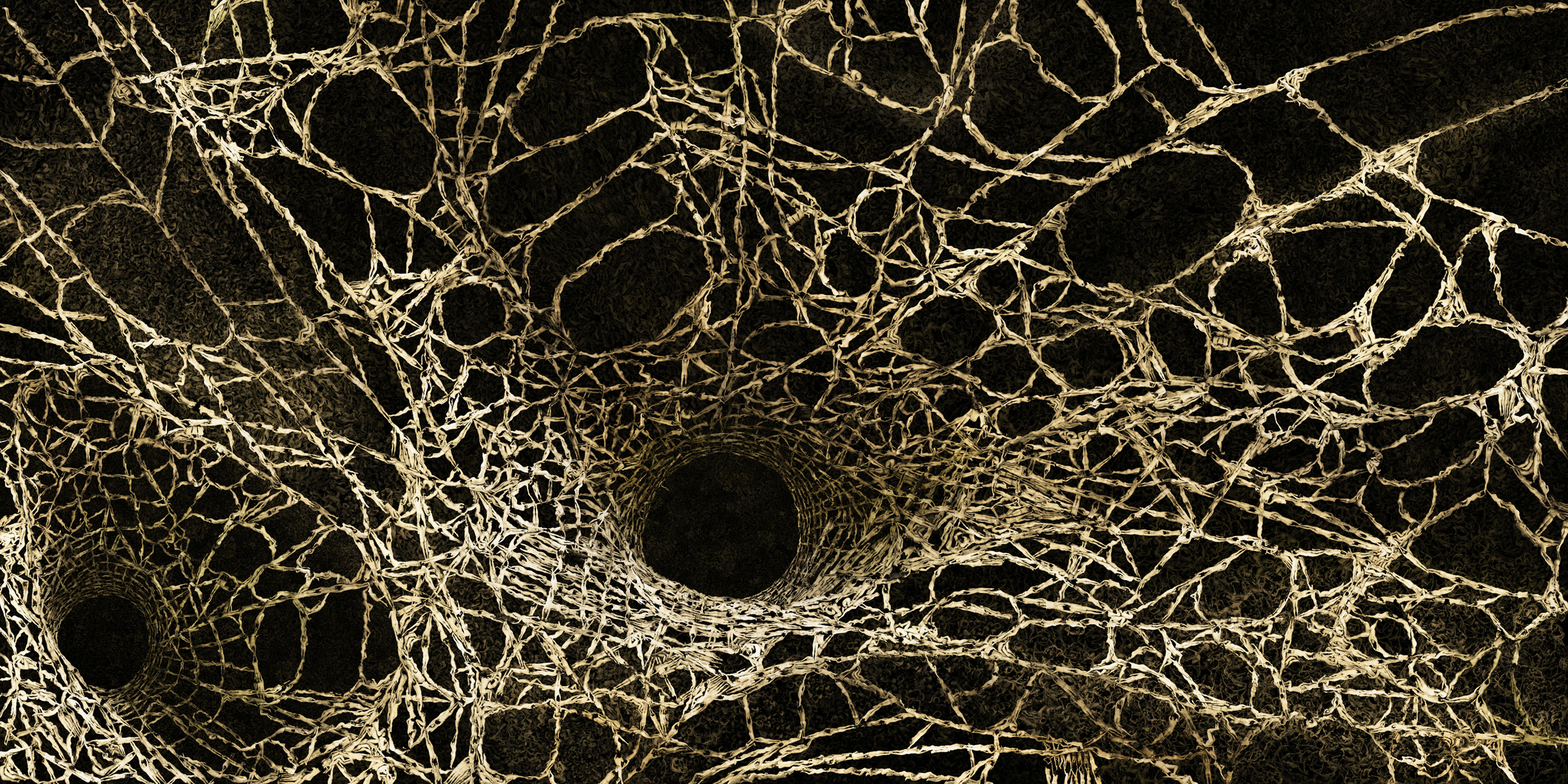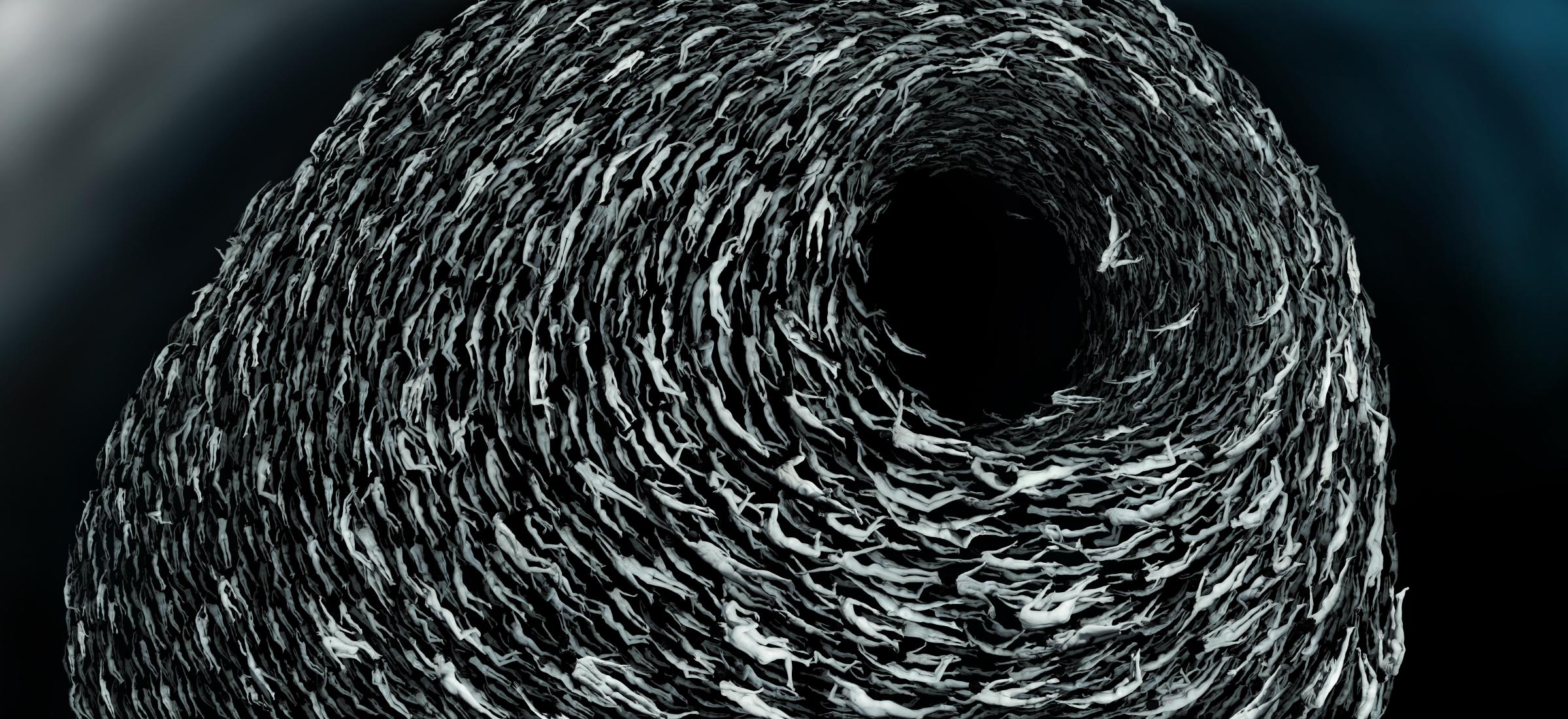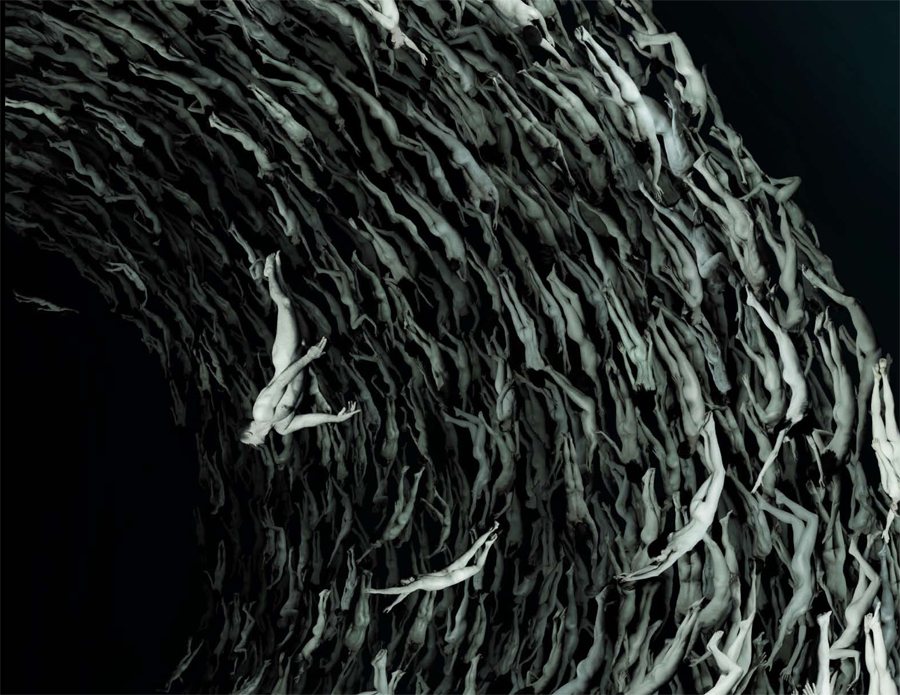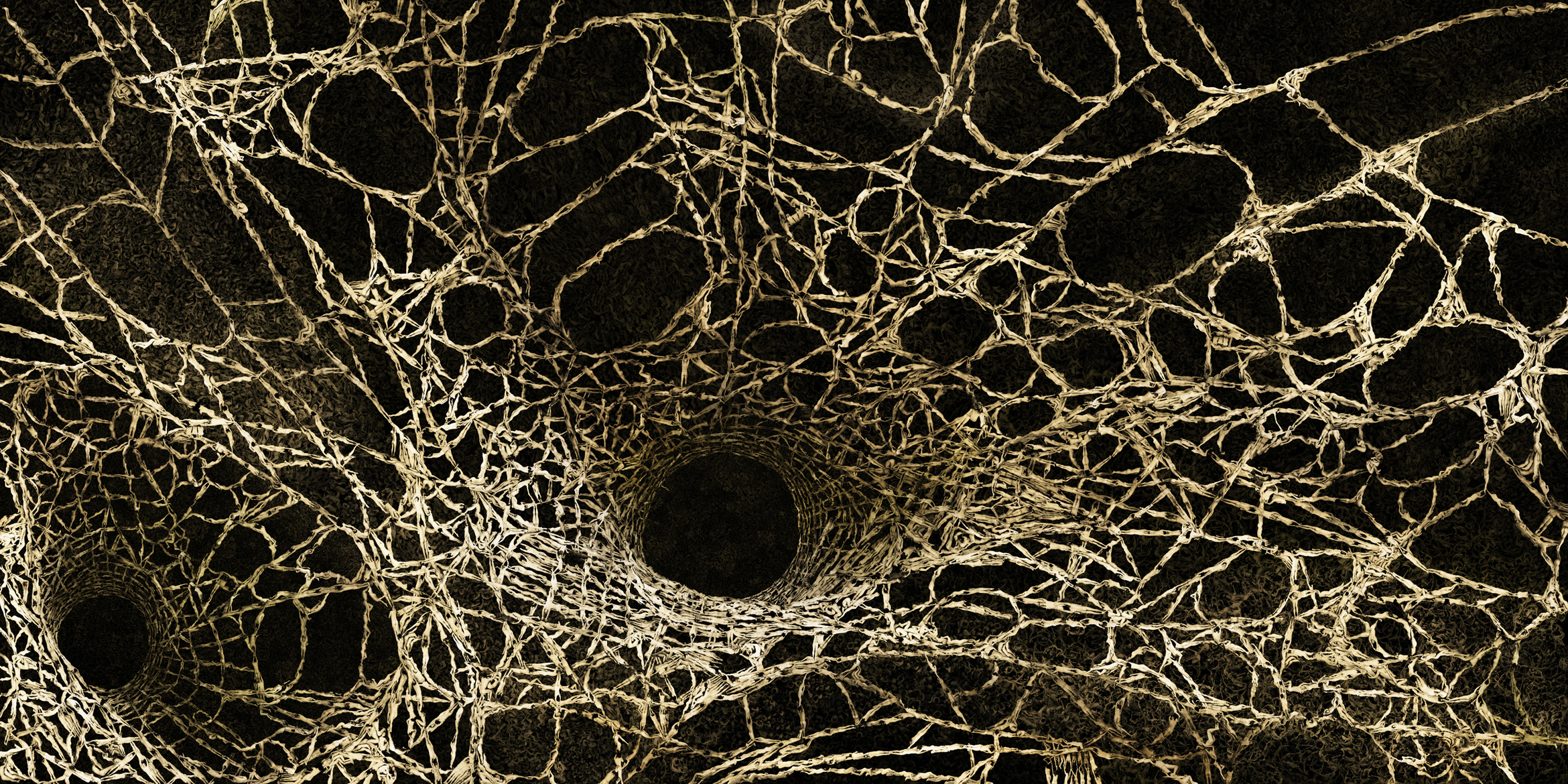
Eleven months. That’s how long it took artist Angelo Musco to fight his way into this world.
The extra time spent in the womb complicated Musco’s birth leaving him paralyzed on the right side of his body. But in spite of the challenges endured — a childhood littered with physical therapy sessions and the slow rehabilitation of life and limb — the experience spawned a fascination with the beginning of life and a curiosity about moving from one world to another.
“Many of my pieces are the consequence of my experience with birth.” Musco told TIME while discussing the inspiration for his art. Birth represented power, perhaps the most forceful of human experience, he said, so he sought to harness this raw energy in his art.
“The power of aggregation is the central theme in my work,” Musco told TIME, before describing his process of editing each individual model in Photoshop, toning for shadow and light before finally positioning the individual, sometimes amidst more than 2 million other bodies. “This collective work holds all the energy — the happiness, pain, and intensity — of the people involved.”
On a drizzly Sunday morning last December, a crowd of 12 people, tightly bundled to thwart the cold, filed in to Musco’s rented studio in Chelsea. From white-collar professionals to struggling artists, each had arrived to participate in the latest project —a body-scape designed to re-create the Tower of Babel.
Ushered into the warmed studio, some members greeted each other with familiar hugs, and offered handshakes and exchanging names with the new models in the crowd. After brief refreshments, Musco’s assistant issued a subtle call to disrobe, and the group hung coats, shirts, and pants on the provided hangers and awaited further instruction.
This is when Musco, camera in hand, went to work.
Asking participants — now nude — to arrange themselves solo, in pairs or in larger groups, he created different shapes and forms out of their bodies on the ground. Posed on green backgrounds, to be edited out in post-production, he molded straight lines, gentle arches, or arranged models to create the illusion of motion.
Carefully giving verbal cues to his models, Musco remained perched on a ladder in the middle of the room, his face set and concentrated — cognizant that even a single hand out of place or leg askew could make the whole photo series unusable.
“It’s like being an old lady, knitting a pattern in wool,” Musco said, explaining how he arranges his models. “There is always a degree of imperfection.”
While some shoots are harder than others — in the Tehom series, only 25 percent of the images taken could actually be used in the final production — the entire process is as exhausting as it is rewarding.
“I put myself in a humble position with respect to my work” he said. “My art is about inclusion and opening doors. And while I might begin a project saying, ‘This is where I want to go,’ I’m constantly reaching out for feedback, and suggestions from those around me.”
[time-iframe url=”http://www.time.com/time/2013/musco/XYLEM.html” width=790 height=510]Zoomable view of Musco’s Xylem
Fans describe Musco’s works along a spectrum from “otherwordly” to “insane.” The giant body-scapes have been displayed in galleries and exhibitions around the world. His carefully built environments — forests, seascapes, ethereal nests — have graced the walls of the 53rd Venice Biennale in 2009, and last December, captured audience attention at Art Basel in Miami.
His artwork is unique in it’s viewing experience because of the immense size of his displays —some pieces can be upwards of 40 feet long and 12 feet tall. The incredible aspect of his work, though, is that few viewers at first glance realize that each “brushstroke” is actually a photographed human body.
Musco’s success rests on the his careful attention to detail and the tireless work of his small staff: each body must be placed just right to ensure the piece looks like one giant photograph, instead of thousands of separate ones. For example, Xylem took three people more than two years working six hours per day to complete
“When I look at the pieces today I see birthdays and holidays, I see happiness, sadness, gained and lost weight,” he said with a laugh, noting that work this time-intensive is “a life and artistic” choice. “The work is like a diary of my creative life.”
While Musco does admit the human form can be tricky to work with, he said there is something important about the art’s unique imperfections.
“I’ve come to believe that it’s not about fixing these broken things,” he told TIME. “It’s about finding beauty in them.”
Thus, this search for beauty takes Musco back to the very people who make his work possible: the hundreds of models willing to bare it all for his art. Beyond the carefully positioned legs, twisted torsos and stretched arms, is the collective energy of these human forms.
“For some it’s the numbers,” Musco said with a smile. “For me, it’s the souls.”
Angelo Musco is an Italian artist currently based in New York. He is the subject of a new documentary, Conception, due to be released this fall. Musco will have a solo show at acte2galerie in Paris, opening April 11, 2013.











More Must-Reads from TIME
- Donald Trump Is TIME's 2024 Person of the Year
- Why We Chose Trump as Person of the Year
- Is Intermittent Fasting Good or Bad for You?
- The 100 Must-Read Books of 2024
- The 20 Best Christmas TV Episodes
- Column: If Optimism Feels Ridiculous Now, Try Hope
- The Future of Climate Action Is Trade Policy
- Merle Bombardieri Is Helping People Make the Baby Decision
Contact us at letters@time.com